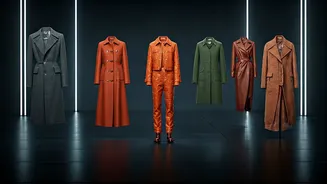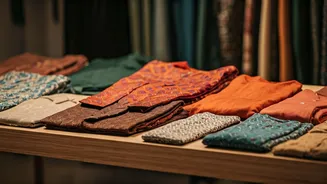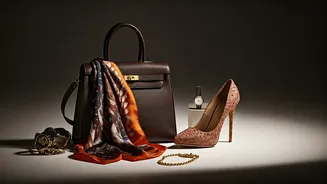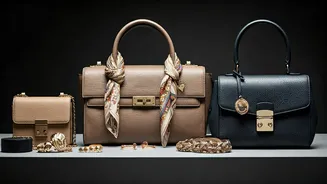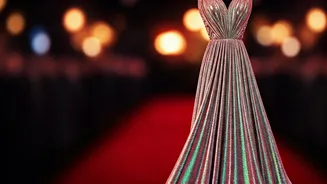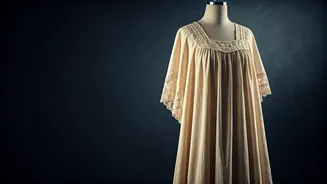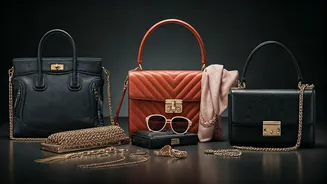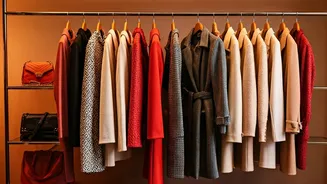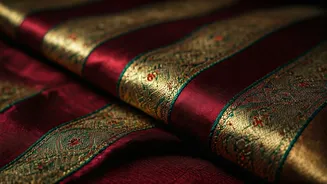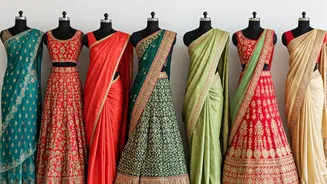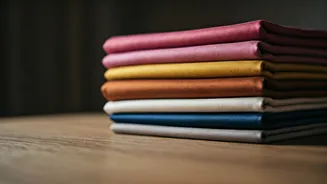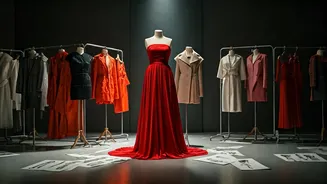Defining Current Trends
Fashion trends are a fascinating reflection of our times. The concept of 'current' itself shifts rapidly. Today's prevailing styles are a mix of comfort
and expression. One significant trend is the resurgence of vintage aesthetics, with a focus on sustainable fashion practices. Many designers are looking back to previous decades for inspiration. Simultaneously, there's a strong embrace of bold, vibrant colours. This can be seen in everything, from ready-to-wear clothing to accessories, and it's particularly prominent in streetwear. Another key trend involves oversized silhouettes and layering. Loose-fitting garments and comfortable styles are prevalent. Athleisure continues to play a significant role, with sports-inspired looks integrated into everyday wardrobes. The blending of functionality and style is key in this development. Finally, there's an increasing emphasis on inclusivity and diversity. Brands are creating lines that cater to a wide range of body types and ethnicities. These trends are not isolated occurrences but are interconnected, reflecting broader cultural shifts and consumer preferences.
Sources of Inspiration
Fashion draws inspiration from diverse sources, continuously evolving and incorporating new influences. Travel, art, and music serve as major catalysts. Fashion designers often look to different cultures for inspiration. Designs that emerge take cues from the distinctive aesthetics of various regions, utilizing unique fabrics, patterns, and silhouettes. Art movements also profoundly impact fashion. From the bold strokes of abstract art to the precise lines of geometric designs, art forms shape clothing construction, colour palettes, and overall aesthetics. Music's influence is another critical factor, particularly in street style. Fashion trends are frequently linked to music genres, such as punk or hip-hop. The influence can be seen in the choice of garments, accessories, and the way they are styled. Furthermore, technology plays a crucial role. The development of new materials and manufacturing methods opens up possibilities. Digital media and social platforms are significant for fashion. They offer new platforms for both designers and consumers to connect. This also speeds up trend cycles, as ideas spread globally.
Fabric and Texture Choices
Fabric selection and textural nuances are crucial in the fashion industry, influencing how garments appear, feel, and function. The variety is vast. Natural fibres, such as cotton, linen, silk, and wool, are favored for their breathability, comfort, and sustainability. These are increasingly chosen for their appeal and earth-friendly production methods. Synthetic fabrics are also widely used. They often offer unique properties like water resistance and wrinkle resistance. Materials like polyester, nylon, and spandex provide versatility. Blended fabrics combine the benefits of natural and synthetic fibres. This offers qualities like ease of care and durability. Texture, including the surface quality of a fabric, adds depth and dimension. Designers experiment with various textures to create distinct aesthetics. Smooth fabrics provide a sleek look, while textured ones, like velvet or corduroy, introduce tactile richness. The interplay of fabric and texture allows designers to create garments that are visually and physically engaging.
Colour Palette Dynamics
Color palettes play a pivotal role in fashion. They establish the tone and mood of collections. Seasonal trends heavily influence colour choices, with palettes typically changing to reflect the time of year. Each season offers a fresh selection of colours that are predicted to be fashionable. Pastels are often associated with spring, while vibrant hues characterize summer. Fall and winter trends often embrace earthy tones, jewel tones, and deeper shades. Color forecasting is an essential part of the industry. Color institutes and trend agencies study consumer behaviour and analyze cultural influences. This helps them predict which colours will resonate with the market. The use of colour in fashion isn't only about the individual shades themselves. Contrast, and balance are equally crucial. Designers use a variety of techniques, such as colour blocking, monochrome looks, and complementary color schemes. These elements can be used to capture attention and communicate specific messages. This further enhances visual impact and influences overall style.
Key Silhouette Insights
Silhouette, the overall shape and structure of a garment, is a primary design element in fashion. It determines the relationship between the clothing and the body. There are diverse shapes, each of which evokes different aesthetics. The classic A-line silhouette, which broadens from the shoulders, provides an elegant and timeless shape. The hourglass silhouette, which accentuates the waist, creates a feminine look. The oversized silhouette, where garments are loose-fitting and flowing, is frequently seen in contemporary fashion. Trends in silhouettes often reflect shifts in cultural attitudes. For instance, the rise of athleisure influences silhouettes, leading to more relaxed and comfortable forms. The silhouette of a garment also influences its function. For example, form-fitting pieces are typically chosen to enhance body lines. In contrast, looser shapes allow greater mobility and create a casual style. The choice of a silhouette is also heavily influenced by the fabric. Stiff materials allow structured silhouettes, while draping fabrics allow fluid, flowing shapes. Designers utilize these elements to shape different aesthetics.
